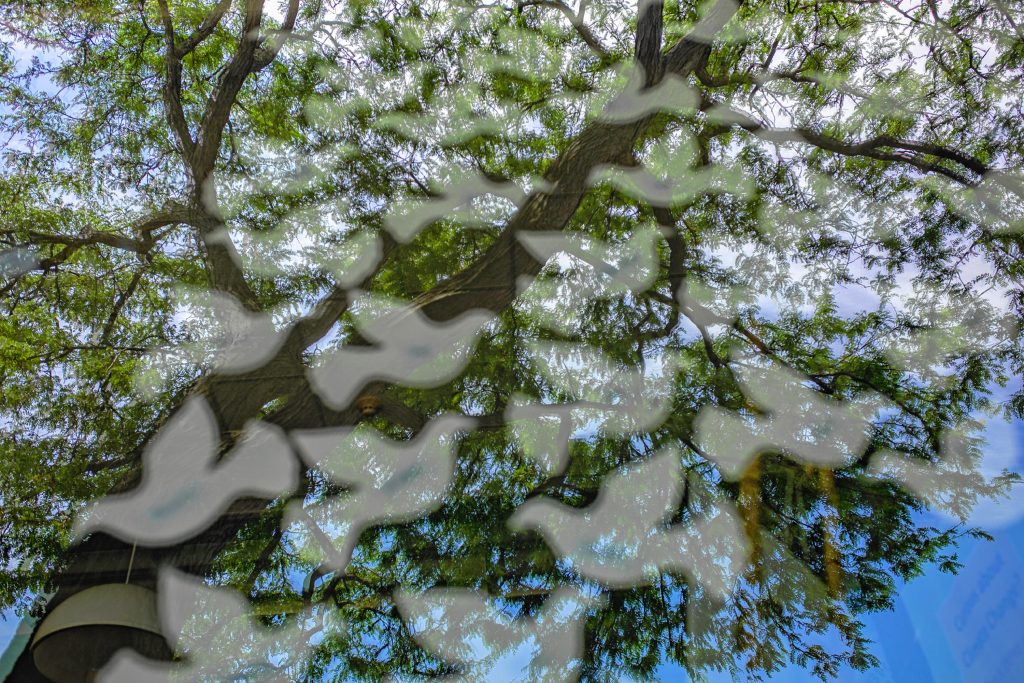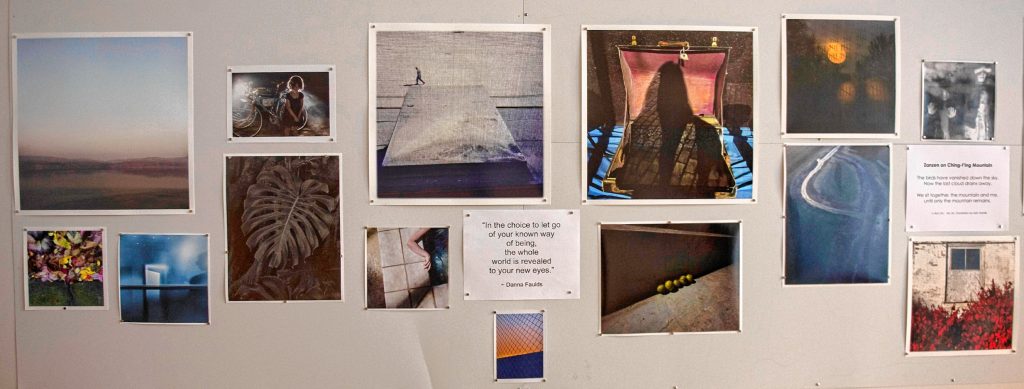By MADDIE FABIAN
Staff Writer
It was a cold and icy winter day when Amy Thompson accidentally locked herself out of the house, with nothing but her phone and time to spare — not an uncommon tale.
But rather than becoming frustrated with herself for wasting 40 minutes of the day or simply sitting down and scrolling mindlessly, like many would be inclined to do, Thompson decided to walk into her backyard and slowly observe the minutiae of the wintry scene.
The result: an ethereal photograph of icy pine needles against a snowy backdrop.
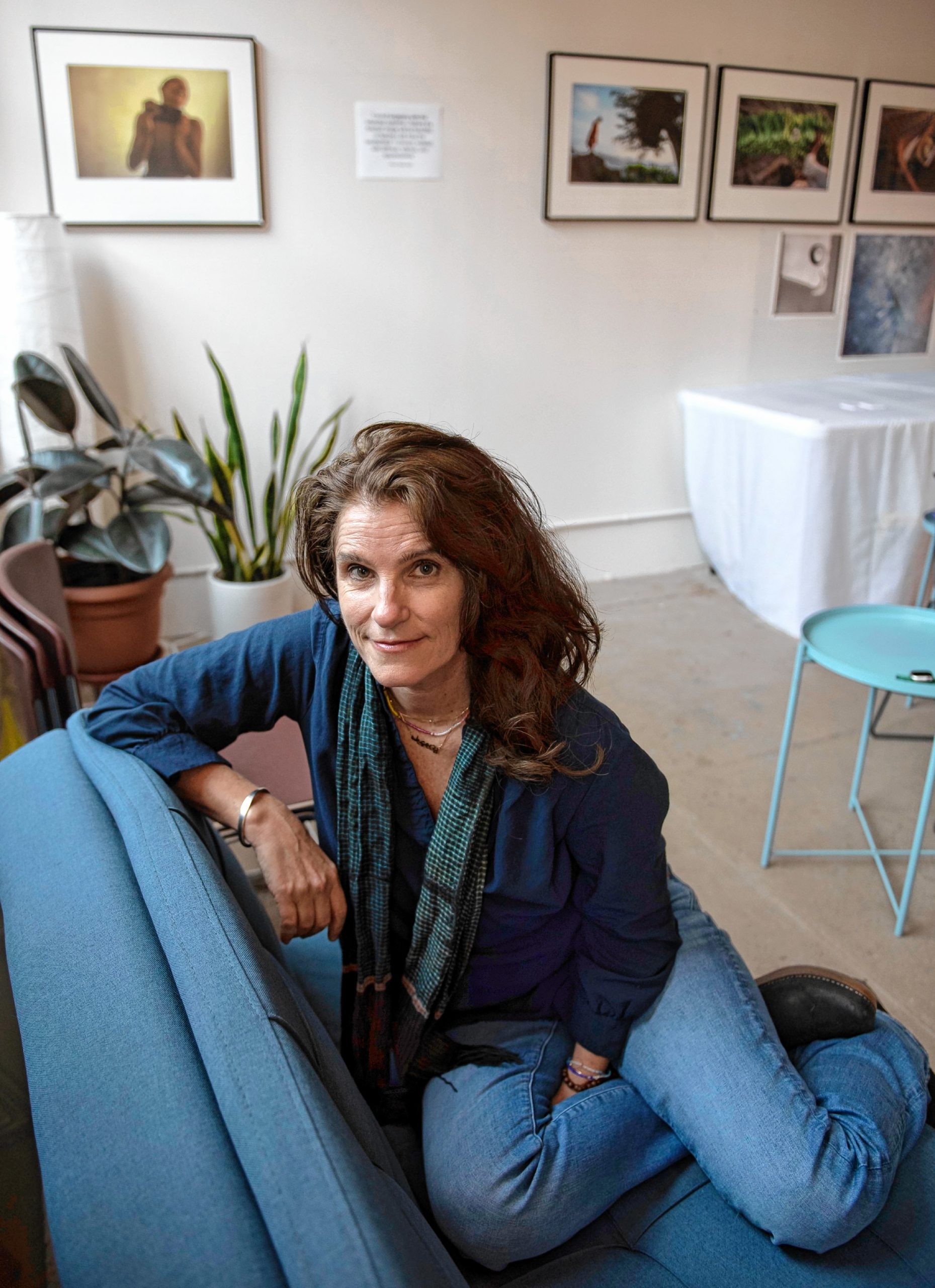
STAFF PHOTO/CAROL LOLLIS
Amy Thompson at her Center for Mindfulness Photography in Easthampton’s Eastworks building.
“I discovered something in my backyard that I would have not been open to seeing otherwise,” said Thompson, a longtime professional photographer and more recently, a teacher of “mindfulness photography.”
In a studio on the ground floor of Eastworks, Thompson’s Center for Mindfulness Photography invites people from all walks of life to embrace a meditative approach to life that, for instance, allows them to take something like being locked out in the cold and turn it into a serene moment and beautiful photograph.
“That picture wouldn’t even exist without some level of a mindful approach to photography and living,” said Thompson, taking the time to choose her words carefully. “Everything around the experience is more pleasant, more relaxed … I don’t feel pressure, so it’s more free.”
Thompson first came upon the concept of mindfulness around 2003 while photographing in Cambodia, where she learned from novice monks who wanted to practice their English.
With roots in Buddhist tradition, mindfulness encourages the observation and awareness of present senses, thoughts and emotions in a non-judgemental way.
“The whole concept made immediate sense to me,” she said. “It’s more of a philosophy or way of looking at the world, relating to the world, than a religion for me.”
“I was discovering how much mindfulness meditation impacted my experience; I just felt the power of it,” she said. “Those two things were kind of happening at the same time, but I didn’t really make the connection between them until much later.”
Over the years, Thompson has photographed for the New York Times and National Geographic, and has completed documentary projects abroad.
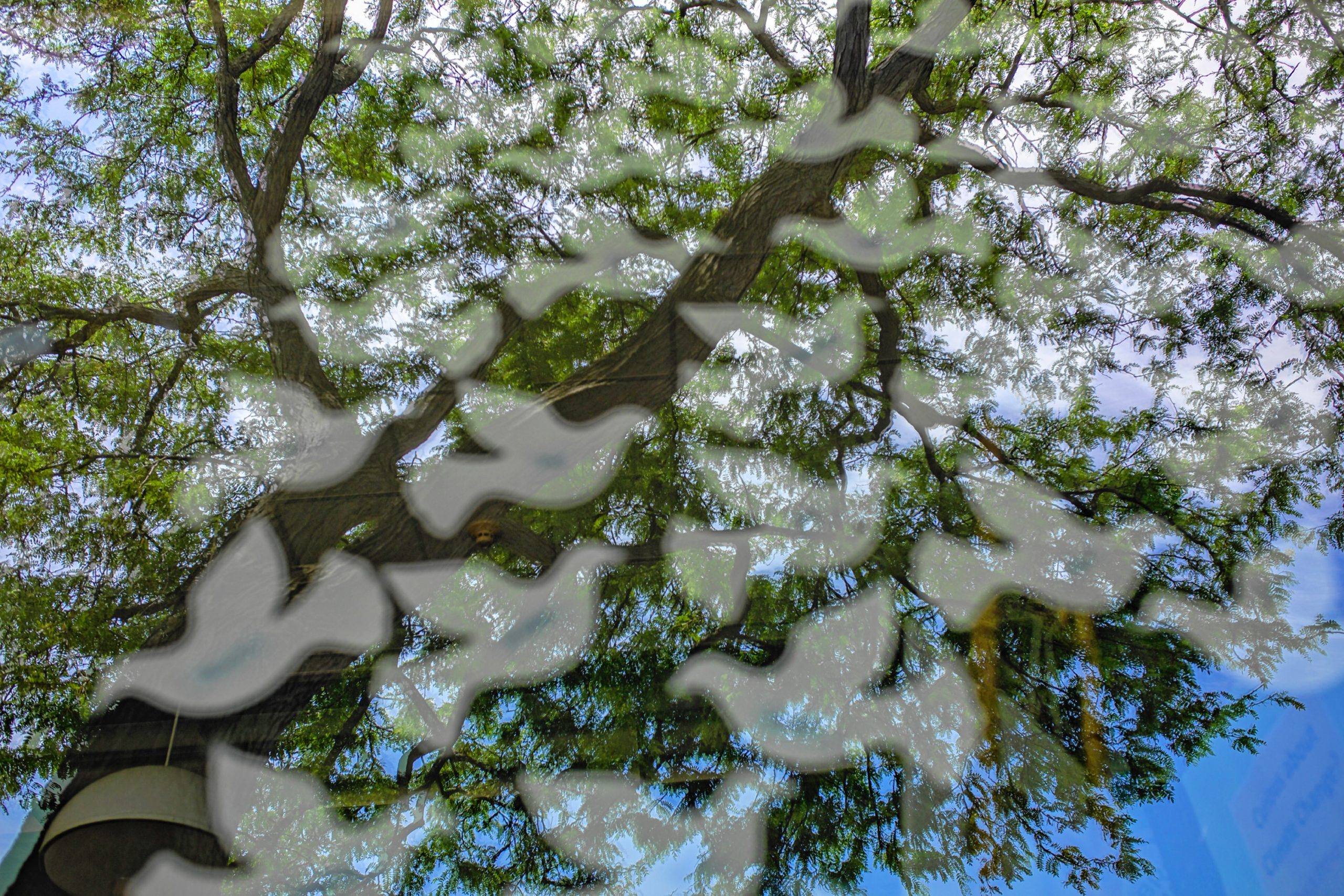
PHOTO BY LIZA SEMLER
Student Liza Semler attended a mindfulness photography workshop with Thompson in Vermont.
As she came to recognize the similarities between her creative process and meditation, she realized that her photography was itself a form of meditation, and she soon began to introduce mindfulness practices to her students at the Griffin Museum of Photography.
“We’re using mindfulness practices to open us up to our creativity,” Thompson said. “If we’re lost in our thoughts and we’re tense and stressed and judging ourselves, that gets in the way of our creativity and openness.”
“I don’t think about if my photos are better now than before; that’s not even the point,” she said. “It’s that the whole experience feels deeper.”
More recently, this year she graduated from a two-year intensive mindfulness meditation teacher training program at the University of California at Berkeley, where she said she arrived at a deeper understanding that “mindfulness isn’t a compartmentalized, segmented thing that you do.”
“I’m teaching other mindfulness practices along with it so that it really can enter into people’s lives beyond the photography, and that’s something that I really care about,” Thompson said. “Photography is kind of like one of the hooks to get people in there.”
Center for Mindfulness Photography
In 2018, Thompson moved to western Massachusetts and in 2022 she established the Center for Mindfulness Photography, where she teaches a variety of workshops, classes and retreats for small groups.
The space itself has the warm and musky smell of a violin, with a lamp providing ambient lighting and natural sunlight pouring in through the tall window covering the front wall.
Chairs are arranged in a circle “because it sort of equalizes everything,” said Thompson, adding that circles are a theme in the work she does — “soft, no hard lines, no beginning … it’s always imperfect.”
The structure of classes is simple: participants ranging in experience sit down, and Thompson invites them to notice their breath. She then talks about mindfulness and guides the group through a meditation practice.
While every class is different, attendees are typically then encouraged to walk out of the room with their camera or phone and take their time mindfully and meditatively photographing what they observe.
“With photography, the more you can have an attitude of openness, the more you will see things in a way that’s new and true to you,” Thompson said, her hands gesturing widely and softly landing on her lap. “Every person has their unique way of experiencing the world, and the more mindful you can be, the more you’ll find your own vision.”
In that sense, photography is a tool to practice mindfulness, and mindfulness is a tool to practice photography; there is a “synergy” between the two, as Thompson puts it.
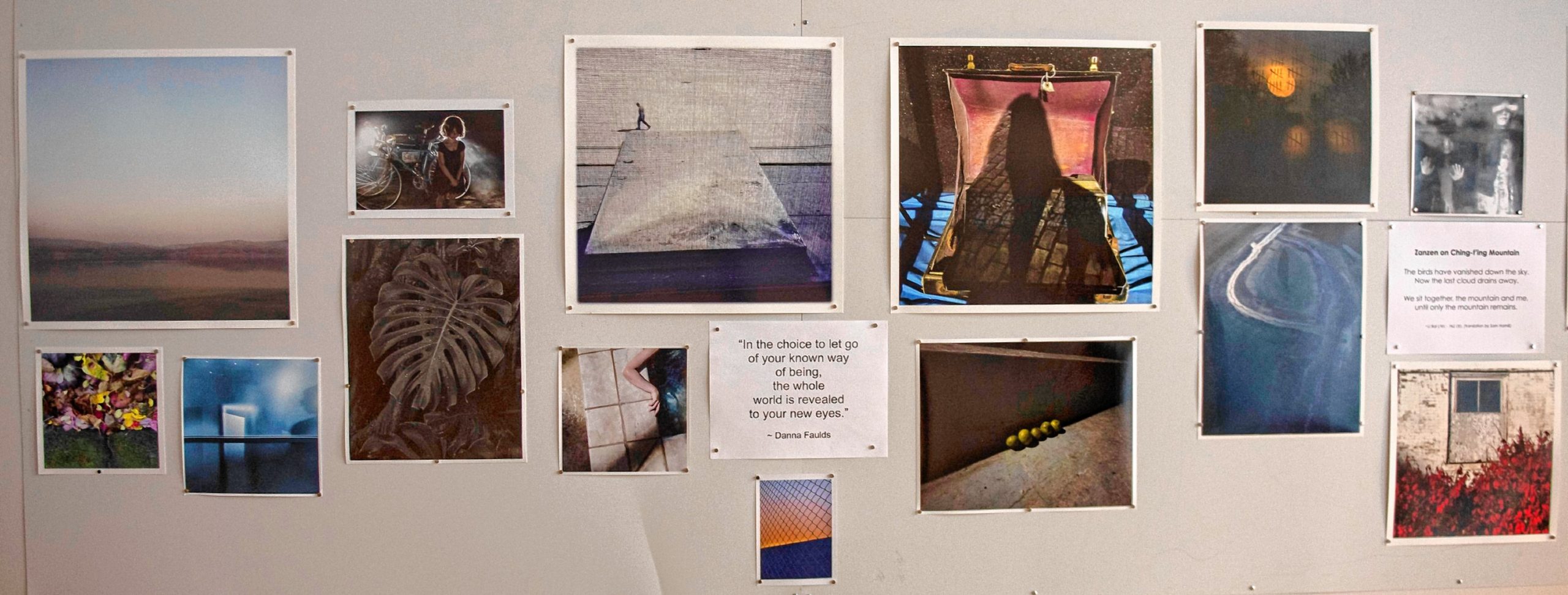
STAFF PHOTO/CAROL LOLLIS
Work by Amy Thompson, who teaches a mindfulness photography class, in her studio in Easthampton.
One of Thompson’s students, Dee Dice, who recently took a class at the Center said the experience was “quite profound.”
Dice is a regular hiker and nature lover, and although she does engage in a daily mindfulness practice, she typically moves quickly through the world.
“With this intentional slowing down and looking deeply at nature, everything became more interesting,” Dice said. “I think I’ll start going out specifically with the idea that I’m going to, for the next half hour, focus on slowing down and having photography be one of the ways that I interact with nature.”
“I can’t even tell you, it just opened up a new world for me,” she said.
Maddie Fabian can be reached at mfabian@gazettenet.com.

